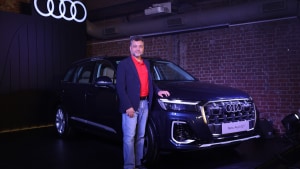All about SUVs
Indians have fallen in love with SUVs with sales increasing on an almost daily basis. Manufacturers are also introducing new SUVs constantly and in the coming years we will see many more being launched. But, few are true SUVs in the real sense of the word. Most are crossovers with the majority being only two-wheel drives. And these sell in large numbers proving that customers basically want a vehicle that has the rugged and strong styling of an SUV, along with additional ground clearance to take on our far from perfect roads. Some SUVs do have all-wheel drive but very few are four-wheel drive.
Recently a friend wanted to buy an SUV, but was completely baffled by terms like part-time four-wheel drive, full-time four-wheel drive, all- wheel drive, automatic all-wheel drive, terrain management system, locking differentials, etc. Many manufacturers also use various different names and acronyms to brand their features differently. So let's look at these features and figure out how they work, and what they're for.
Four Wheel Drive (4WD) or 4 X4
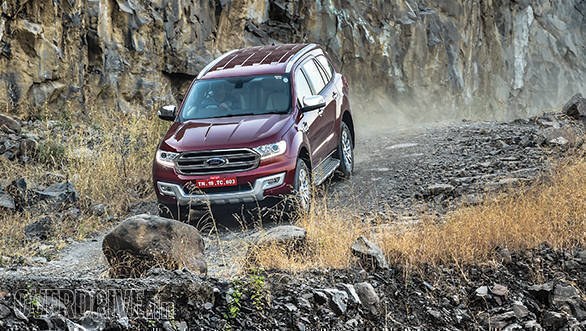
When you say 4WD, the manufacturer is normally referring to a part-time driver-selectable system. As the name suggests, in a four wheel drive SUV the engine's power is transferred to all four wheels. But not all the time, only when the driver decides to select that mode.
Typically a 4WD will have a rear driveshaft and a separate one in the front also. It also has a front and rear differential and a transfer case that distributes the power. The transfer case is attached to the rear of the transmission and power is directed from the engine through the transmission and then through the transfer case to either the rear wheels or both the front and rear wheels.
A part-time 4WD also has locking hubs on the front wheels. When driving in two-wheel drive these hubs are utilized to disconnect the front wheels from the front differential and the half shafts that connect the differential to the hub. As the front differential, half-shaft and front drive-shaft don't spin or function when the car is in two-wheel drive mode, there is less wear and tear on these parts. And as a result of these parts being disconnected, the fuel efficiency is also better due to reduced friction because of fewer moving parts. In earlier days, manual locking hubs were common and even the first generation Maruti Gypsy came with them. To engage four-wheel drive the driver needed to step out and turn a knob on the hubs to lock them. Nowadays most, if not all 4WDs, have automatic locking hubs, that get locked the moment the driver selects four-wheel drive and this can be done when the vehicle is moving too.
 Vehicles like the Force Xplorer still use a lever to select the various driving modes
Vehicles like the Force Xplorer still use a lever to select the various driving modes
In a part-time four-wheel drive vehicle, on regular roads, you drive in 2H or two-wheel drive high. This is like driving any normal two-wheel drive vehicle. When the road surface is slippery and there are chances of the wheels losing traction, you select 4H or four-wheel drive high. In this mode the power is sent to all four wheels, improving traction. In case you encounter slush, deep snow, or have to go up or down a steep unpaved slope, it's time to choose 4L or four-wheel drive low. In a 4WD vehicle, the transfer case also has an additional set of gears with a far lower ratio. So when you engage 4L, these extra gears come into play giving the vehicle its maximum torque at a much lower speed. For example, in 1st gear, the maximum achievable speed may become as low as 6 to 8 kmph! But the torque will be the maximum available and the pulling power of the vehicle gets multiplied. This allows the four-wheel drive vehicle to tackle much tougher terrain and even crawl over rocks, go up or down steep slopes and drive through deep slush, sand, and snow.
The method of selecting the different drive systems differs between SUVs. In older vehicles like the Maruti Gypsy, you have a second small gear lever that needs to be shifted to go from 2H to 4H or 4L. More modern vehicles have dials or switches to choose the different modes.
Locking Differential
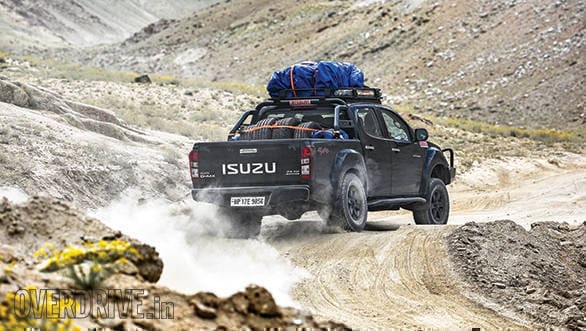 Manually locking hubs are still popular with serious off-roaders. But most SUV's now come with automatically locking hubs
Manually locking hubs are still popular with serious off-roaders. But most SUV's now come with automatically locking hubs
You find these in serious off-road vehicles like the new Ford Endeavour, Toyota Fortuner, etc. A locking differential is usually activated and locked by a switch. When the differential is locked, both wheels spin at the same speed. It's like locking both wheels, almost as if they were on one common shaft. This results in full power going to the wheel that has traction. Let's say if you are going over a deeply rutted surface and one of the rear wheels lifts off the ground and loses all traction, then the entire torque will be transferred to the other wheel that is in contact with the ground. A differential that can be locked certainly increases the off-roading ability of a four-wheel drive vehicle.
All-wheel drive or AWD
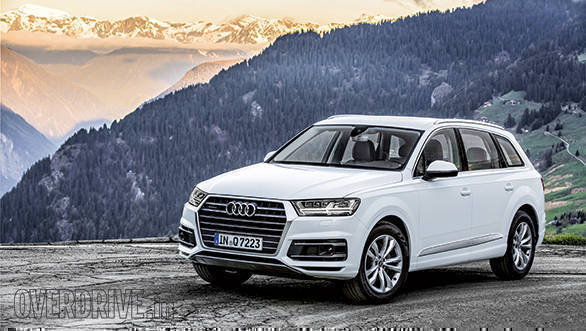 An AWD does not have the extreme all-terrain capabilities of a pure part-time four-wheel drive
An AWD does not have the extreme all-terrain capabilities of a pure part-time four-wheel drive
All-wheel drive is rather new and now we find it on cars varying from the Audi R8 to a Volkswagen Tiguan. Some manufacturers also call this system full-time four-wheel drive. The basic parts remain the same - two differentials one at the front and one on the rear and a transfer case. Locking hubs are absent because all wheels are driven permanently. But the biggest difference is that the transfer case is a single speed one and does not have an additional set of gears to lower the ratios and change the torque delivery pattern for maximum torque multiplication.
Most of these vehicles are full-time all-wheel drives with the driver having no option to do any sort of selection. There are also few AWDs like the Honda CR-V that normally run in two-wheel drive. Only when the electronics detect that there is loss of traction on any of these two wheels, is the power also transmitted to the other two wheels. In most cases, the driver does not even know this is happening. Some AWDs have a button or switch that enables you to keep all-wheel drive engaged, but this is not common.
Most AWD's have very advanced electronics and sensors that monitor wheel speed, its traction, etc. And based on this information that is collected hundreds of times in a second, the ECU (engine control unit) decides which wheel to send power to. The AWD system is very helpful in slippery conditions and when driving on snow, etc, because it provides the vehicle with better traction and grip on the road by splitting power evenly between the front and rear wheels. But an AWD does not have the extreme all-terrain capabilities of a pure part-time four-wheel drive. Many supercars now also come with AWD, because controlling a 500+PS rear-wheel drive car, is not everybody's cup of tea.
Terrain management system
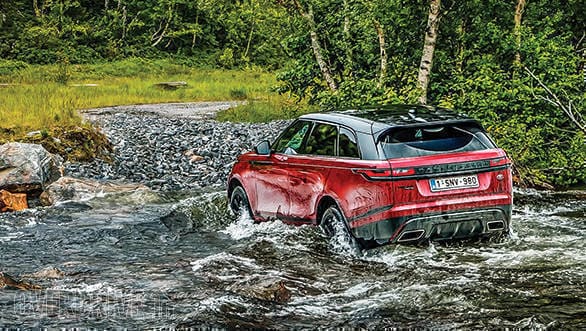
This is also a fairly new invention and more and more manufacturers are now equipping their cars with such systems. Of course, everyone has a different name for the system.
This system again uses very advanced electronics and sensors to alter the engine torque, engine response, change gear shift points, braking performance, etc. Some advanced systems also alter the chassis a bit and allow ground clearance to be increased electronically too. Basically, there is a dial or switch that allows you to select different driving modes like normal, sand, grass, snow, rock, etc. Let's say you select grass or snow, both of which can be very slippery. Then the throttle response will become less eager, gears will shift up more quickly, and power will get delivered more smoothly to prevent any slipping of the wheels. In case you select sand, the opposite will happen. The engine will rev a lot more, the wheels will also be allowed to spin far more and the gearbox will downshift and hold lower gears for longer to allow the engine to run continuously at high rpm. If you select rock mode then again the power will be delivered more smoothly and at a far lower rev range. The gear selected may be lower and if you are crawling over obstacles the gearbox will ensure the vehicle stays in first gear.
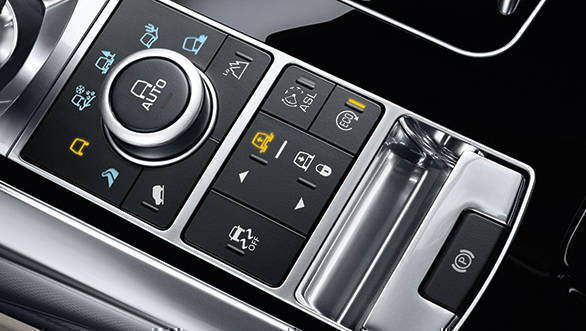
Terrain management systems also work in conjunction with systems like ABS, traction control, etc, and most also have a hill descent control feature. If you select this, the brakes will apply automatically and slow the rate of descent. If any wheel or wheels are locking then ABS will ensure the brakes are released and applied again instantly to stop the vehicle from skidding.
Thanks to the advances in features like the terrain management system, even hardcore off-road vehicle manufacturers like Land Rover, are gradually doing away with the transfer case with low ratios. Very honestly, Land Rover's 'Terrain Response System' works so well, that they can afford to do away with the low ratio transfer case.
But still, hardcore old fashioned off-roaders like me continue to swear by the low ratio transfer case. Sadly it is an endangered piece of equipment, with more and more manufacturers opting for all-wheel drive with some sort of terrain management system. Driving a 4WD off-road in extreme terrain requires special skills, but with the advent of all-wheel drives with terrain management systems, even dummies are able to enjoy life beyond tarmac.
All Terrain Tyres (AT) and Mud Terrain Tyres (MT)
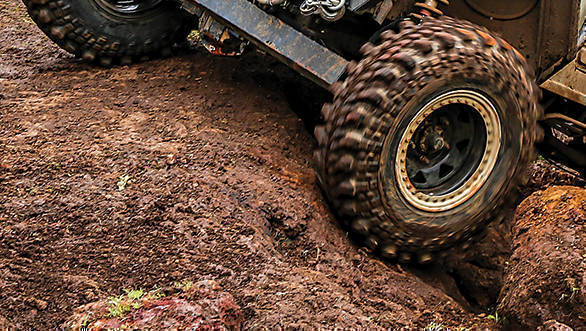 If you are into serious off-roading and tackle tough terrain on a regular basis, then you need 'Mud Terrain' (MT) tyres
If you are into serious off-roading and tackle tough terrain on a regular basis, then you need 'Mud Terrain' (MT) tyres
Your vehicle can have the best 4WD or AWD system, but eventually, it's the tyres that have to grip the road surface. If at times you do venture off-road then it makes sense to get 'All-Terrain" tyres. These have a deeper tread than normal street tyres and they provide more traction on unpaved surfaces such as loose dirt, mud, sand, or gravel. This is because their deeper and wider grooves help the tread sink into mud or gravel surfaces. All treads capture air while running, especially on paved roads and this results in tyre noise. As an AT tyre has a more aggressive tread pattern it will make more noise than a regular street tyre. But in most cases the noise is not really intrusive. These tyres also manage water dispersal fairly well and have a decently long life when used on paved roads. They also offer a smooth ride, good handling, etc. Simply put, the 'All-Terrain' tyre is an all-rounder.
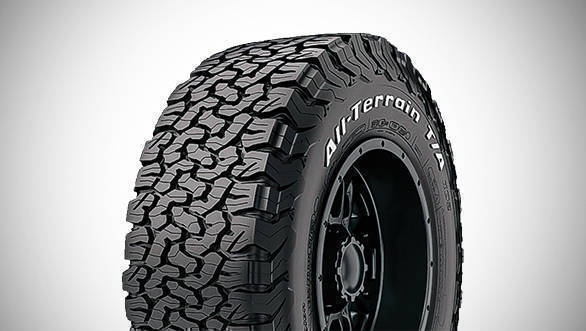 Simply put, the 'All-Terrain' (AT) tyre is an all-rounder
Simply put, the 'All-Terrain' (AT) tyre is an all-rounder
But if you are into serious off-roading and tackle tough terrain on a regular basis, then you need 'Mud Terrain' tyres. These are specifically designed to perform off-road, in jagged rocks, loose soil, mud or sand. Mud tyres feature large tread blocks and have wide spaces between them to get the best grip on off-road surfaces. The big voids also help the tyres get rid of mud, gravel, etc as it turns and as a result, it has a fresh surface to grip. The disadvantage of MT tyres is that on paved roads they are very noisy and rough and they also adversely affect the handling and have a far rougher ride because of their more rigid construction.
Some manufacturers do offer their vehicles with AT tyres, but MT tyres are an aftermarket option due to their very specialized nature. But again, these tyres have limited or no benefits when fitted on the SUVs with two-wheel drive that are garnering such high sales volumes in India. In my view, having a two-wheel drive SUV is like have a handgun without ammunition! Sure you can show it, but can't use it.
Starts Rs 2.55 Crore
5204cc
Automatic
610
530
7.63 Kmpl
Starts Rs 13.59 Lakhs
2596cc
Manual
91
250
-NA-
Starts Rs 32.75 Lakhs
1996cc
Automatic
170
420
13.9 Kmpl
Starts Rs 22.29 Lakhs
1597cc
Automatic
120
300
18.3 Kmpl
Starts Rs 29.98 Lakhs
2755cc
Automatic
166
500
-NA-
Starts Rs 31.99 Lakhs
1984cc
Automatic
190
320
12.65 Kmpl

